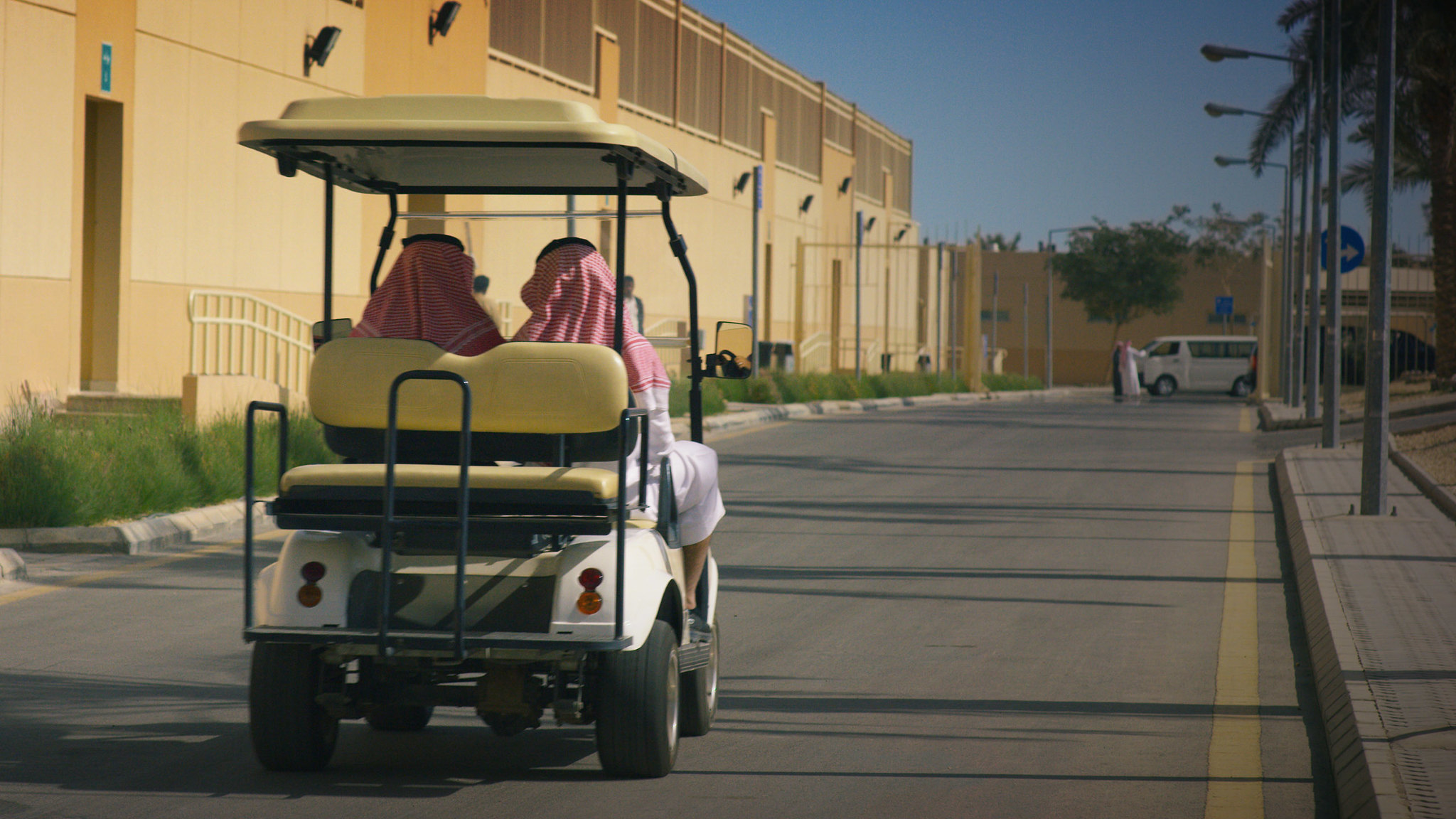On Sunday, September 25th, the New York Times ran a story on its front page about the documentary Jihad Rehab. The article argued that the film’s director, Meg Smaker, was the victim of an unfair pile-on after the doc premiered at the Sundance Film Festival in January. Some critics praised the film’s study of four Yemeni men preparing to re-enter society after years of incarceration due to suspected terrorist links. Others, myself included, noted the impressive level of access Smaker received but were perturbed by what she did with it, as the resultant film was a minefield of ethical red flags. Those flags have risen again as the Times article gave the controversy its widest reach yet, which inspired filmmakers like Oscar winner Alex Gibney to rally to Smaker’s side and conflate film criticism with censorship, while a chorus of Twitter trolls shaped a false narrative about a filmmaker being silenced.
Prior to the Times article’s publication, critics, along with Muslim filmmakers and others of Middle Eastern, North African, and South Asian (MENSASA) descent argued that Jihad Rehab perpetuated stereotypical views of the Middle East and fell into the familiar trap of conflating Middle Eastern representation with stories of terrorism. Festival staff members resigned and Sundance issued an apology, as did one of the film’s executive producers, Abigail E. Disney. Gatekeepers in the industry demonstrated that they were willing to listen to the calls and commit to be more mindful of representation and authorship, and to put in the work to ensure ethical programming. As a result of these events, Jihad Rehab fell into obscurity following a splashy premiere.
“Look Over There!”
While the Times gave Smaker her rightful opportunity to offer a riposte, it only told half the story. The article amounted to a dangerous and insidious act of gaslighting. It was classic “look over there!” misdirection to change the narrative. This angle is problematic when an institution as influential as the New York Times chooses to make front page news out of a filmmaker who feels that her peers rained on her parade instead of giving space to the many Muslim and Middle Eastern filmmakers calling for greater accountability in authorship, representation, and ethical programming.
The article’s author, Michael Powell, argues that the negative reaction to Jihad Rehab centred on Smaker’s race. The Times framed the response to Jihad Rehab as a cancel culture pile-on. In doing so, it grossly misrepresented and minimized other voices in the ethical discussion. The debate long preceded the Sundance premiere, as Anthony Kaufman noted in a thorough piece for the International Documentary Association’s Documentary magazine, which recapped discussions with Muslim filmmakers about representation and ethics dating back to 2019.
Authorship and Ethics
Nevertheless, the Times reduced the debate to a single factor. “Some suggested her race was disqualifying,” wrote Powell, “a white woman who presumed to tell the story of Arab men.” Powell’s argument that authorship worked against Smaker was inevitable. The publicity campaign surrounding Jihad Rehab’s Sundance premiere directly invoked her identity as a selling point for a story. (Which is a normal strategy for any festival campaign, especially with an emerging filmmaker trying to cut through the noise.) The press materials noted Smaker’s firefighter-to-filmmaker career trajectory, admittedly, a cool hook, and cited her grasp of Yemeni Arabic as a qualifier to tell this story. To the campaign’s credit, it partly worked because I saw the film over sexier Sundance fare precisely because the team sold it so well.
However, the campaign didn’t withstand scrutiny. For one, there’s an unmistakable Western gaze in the project. The film, as virtually all of its critics noted, branded the interviewees with “rap sheets” – title cards that explained why the men were detained and, therefore, inadvertently framed them as terrorists from the outset. These men were never charged. In one case, an interviewee’s most grievous “crime” was being the brother of Osama bin Laden’s right-hand man, for which he spent nearly half his life in detention. Moreover, Smaker’s oft-cited skill in Arabic was nowhere to be found in the interviews, save for a few words at the beginning. Smaker conducted her interviews in English—or, at least, the ones presented in the film—and the men responded as best they could, albeit with obvious degrees of discomfort and difficulty in answering complex questions in a foreign language.
Here Come the Critics!
In a piece in Documentary, filmmaker Assia Boundaoui addressed the language qualifier and why that was important in the concerns that many filmmakers like herself raised. “Arabic is my mother tongue and I immediately clock that Smaker’s elementary Arabic, primitive words cobbled into crude sentences, barely carries an Arabic accent much less a Yemeni one,” wrote Boundaoui. “To see my language and the homelands of folks in my community, used as backdrops for white savior tendencies is nauseating.”
For critics who don’t speak Arabic, little was lost in translation since the awkwardness carried over into the English interrogations. In my article on Sundance entitled “A Question of Ethics,” which Powell cited in his piece, I took issue not with Smaker’s race but with her line of questioning and narrative framing. Her sitdowns with the detainees resembled interrogations, rather than interviews. “More than one man expresses discomfort with the questioning. Another leaves the interview entirely and ceases communication,” I wrote. “It’s as if the men are being re-traumatized by the interrogation process.”
Similarly, Abby Sun in Filmmaker, while noting the same aspects of Smaker’s “qualifiers” that were made available to her, wrote that the questioning of the film crossed the line. “One participant asks Smaker, who is credited as one of the film’s cinematographers, across two different scenes to stop filming for safety reasons,” noted Sun. “The only explanation I have for Smaker continuing to use the scenes depicted is that she had an overwhelming desire to establish participants were ‘backsliding’ from the center’s lessons, and how extraordinary she thought these situations were.”
Subjects Fearing for Their Lives
Most serious—and Powell’s Times article omits this point entirely—was the statement posted by the independent advocacy organization CAGE on behalf of the men featured in Jihad Rehab, which was circulated by The Guardian back in July. It expressed their request that the film be withdrawn from circulation, noting that the circumstances for which the interviewees gave consent while in prison did not match the circumstances under which the film was being shown. Moreover, they articulated clear concerns of physical harm to them and to their families directly because of the film.
“While the film presents numerous issues, perhaps most problematic is the fact that we are in contact with two of the four Yemeni men featured in the film who informed us that they were not aware the film was being released publicly,” noted CAGE. “In fact, one of the men explicitly stated that he had told the filmmaker he didn’t want to be featured in the film, which was obviously and completely disregarded. In our conversations with both of the men, they strongly imparted to us that the film poses a serious risk to their lives and to their families’ lives, and at least one of them has recently been in touch with the director Meg Smaker to urgently request that the film be withdrawn from distribution.”
Let’s Listen
The victims in the Jihad Rehab debate, simply put, include many more people other than Meg Smaker. Let’s start with the film subjects who were re-traumatized by the filmmaking process and now fear for their lives as they re-enter society. And let’s add the filmmakers who must again convince the industry to dispense with tired stereotypes and to let them tell their own stories. Also victimized is every filmmaker who faces legitimate censorship and isn’t getting airtime.
Powell suggested that a campaign was waged to pull Smaker’s film. His evidence was a single post from my personal Twitter account when the film played at Doc Edge New Zealand this summer under a new title, The Unredacted. A single head-scratching “why-would-you-invite-that-mess-upon-yourself?” tweet is not a censorship campaign. If anything, it’s a learning experience for this critic to give a complex topic more than 240 characters.
Smaker has every right to want to continue to screen her film. Similarly, the men involved have every right to ask her not to screen it if they fear serious harm. I don’t agree with the programmers or distributors who give airtime to her film, and that’s my right, too. Simply put, to program Jihad Rehab, or The Unredacted, now is to say to the chorus of filmmakers and film subjects who voiced their concerns, “We’ve heard you, and we don’t care.” Let’s take a cue from Sundance and Dr. Disney and say, “We’ve heard you and we’re committed to change.”
As critics, programmers, filmmakers, and audience members in the documentary field, it is our job to question everything we see. That isn’t censorship. It’s active viewing, and it’s our responsibility.













